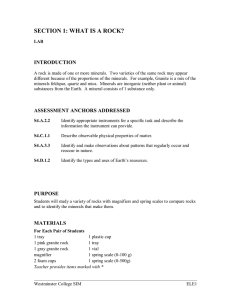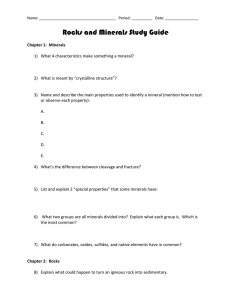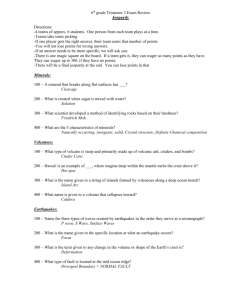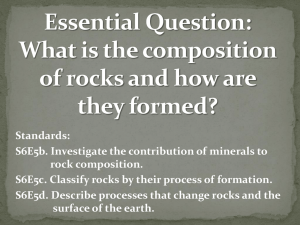Advanced Igneous Petrology Undersaturated mafic magmas
advertisement
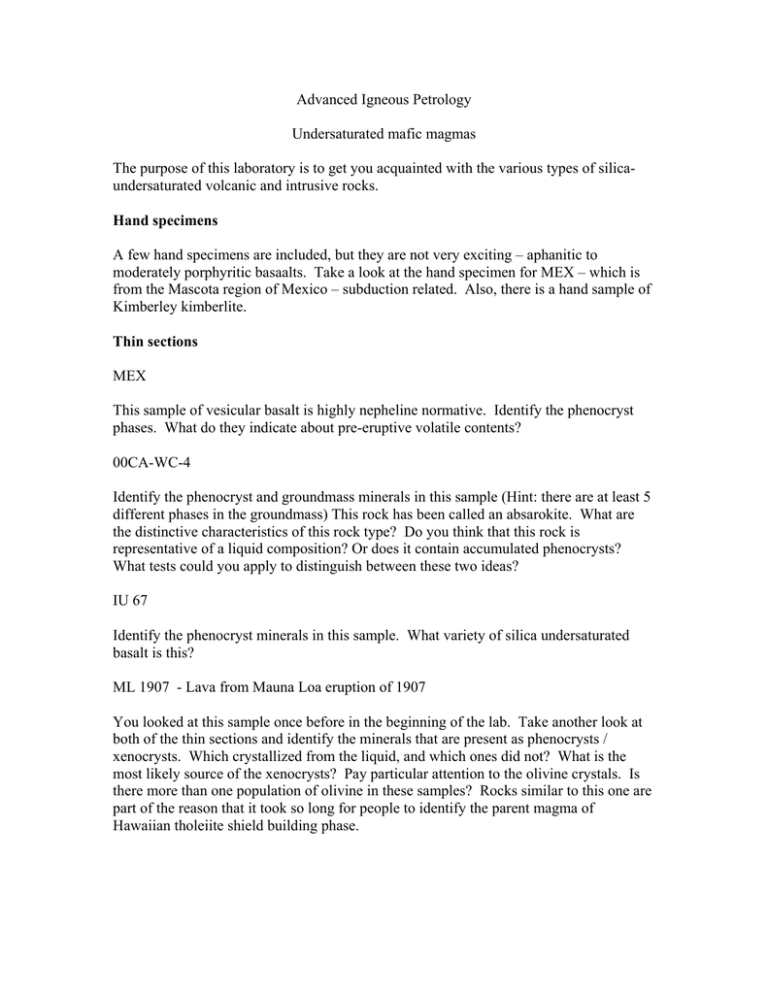
Advanced Igneous Petrology Undersaturated mafic magmas The purpose of this laboratory is to get you acquainted with the various types of silicaundersaturated volcanic and intrusive rocks. Hand specimens A few hand specimens are included, but they are not very exciting – aphanitic to moderately porphyritic basaalts. Take a look at the hand specimen for MEX – which is from the Mascota region of Mexico – subduction related. Also, there is a hand sample of Kimberley kimberlite. Thin sections MEX This sample of vesicular basalt is highly nepheline normative. Identify the phenocryst phases. What do they indicate about pre-eruptive volatile contents? 00CA-WC-4 Identify the phenocryst and groundmass minerals in this sample (Hint: there are at least 5 different phases in the groundmass) This rock has been called an absarokite. What are the distinctive characteristics of this rock type? Do you think that this rock is representative of a liquid composition? Or does it contain accumulated phenocrysts? What tests could you apply to distinguish between these two ideas? IU 67 Identify the phenocryst minerals in this sample. What variety of silica undersaturated basalt is this? ML 1907 - Lava from Mauna Loa eruption of 1907 You looked at this sample once before in the beginning of the lab. Take another look at both of the thin sections and identify the minerals that are present as phenocrysts / xenocrysts. Which crystallized from the liquid, and which ones did not? What is the most likely source of the xenocrysts? Pay particular attention to the olivine crystals. Is there more than one population of olivine in these samples? Rocks similar to this one are part of the reason that it took so long for people to identify the parent magma of Hawaiian tholeiite shield building phase. I14-10 Identify the abundant mafic phase in this sample. This is an intrusive dike rock, and the lab records identify this rock as a minette. Is this the correct name for this rock? Why or why not? What are the groundmass minerals? 9-25-362.5 and L-30-183 These are samples of kimberlite. Identify the kimberlite as type 1 or type 2. Not that these samples contain abundant xenocrystic minerals from the mantle. There may even be a few rare xenocrysts picked up from the crust. Determine the minerals in this rock that are primary igneous minerals. Give their identity and state your reasons for calling them primary. What are the dominant xenocrystic minerals? Are there any alteration products? What are they? Would you trust an analysis of this rock to be representative of a liquid composition? What might you do to get a better idea of the igneous rock composition?
